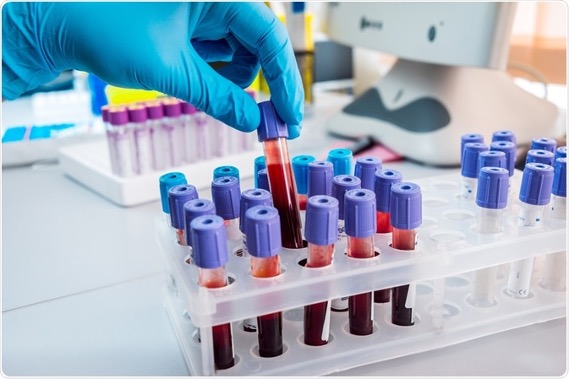
Your healthcare provider always asks when you’ve last had labs done, and you feel like you’re getting poked and prodded every time you turn around … but WHY?! Even though we specialize in diabetes, most of the labs we monitor at Southside Diabetes are similar and/or mirror what your primary care provider may order. Therefore it’s also important to keep your PCP and diabetologist up-to-date with what you’ve had drawn and when so we don’t duplicate the same tests – which is also likely to leave you with a bill from your insurance company.
Please note: this is not an exhaustive list of lab work. If you have additional specialists that draw labs, such as rheumatology, surgeons, and cardiologists, those tests are not covered here. If you would like additional information on why your healthcare provider is drawing these labs, take a printed copy of your results – or pull up the results on your app – to your next visit and ask what the tests mean and why he or she is ordering them.
Now let’s get on with the most popular lab tests! This list has primarily been compiled based on the tests we run on our patients at Southside Diabetes.
|
Test Name |
Why We Order It |
|
Microalbumin, urine |
Measures protein in the urine. The result should be zero or low. This is the earliest indicator that your kidneys are stressed, either due to uncontrolled blood sugar, uncontrolled blood pressure, dehydration, or certain medications. We generally want to see this level 0-30. |
|
Creatinine |
Creatinine is a metabolic waste product that is cleared through your kidneys. We all have creatinine, but if the level is too high, it may indicate that your kidneys are not clearing it as well as they should. Whereas urine microalbumin is an early indicator of kidney stress, an elevation in creatinine is a later sign that your kidneys aren’t working as effectively as they should. We’d like to see creatinine less than 1.0. This test is often paired with GFR or eGFR. |
|
GFR (glomerular filtration rate) or eGFR (estimated GFR) |
This is how well your kidneys are filtering everything in your blood stream. Think about the strainer in your kitchen sink. When it gets full of food particles, the water starts backing up in your sink. Now think about your kidneys are the sink strainer. When large particles such as glucose and creatinine start to clog your kidneys, your GFR values starts to decline. The particles starts to back up in your bloodstream, thereby causing lab values such as creatinine to rise. We want filtration to be as good as possible, so GFR should be above 60. Creatinine (waste product) should be lower, so we want it to be less than 1.0. |
|
ALT (alanine aminotransferase) and AST (aspartate aminotransferase) |
Both ALT and AST are liver enzymes that measure how well the liver is functioning. Generally speaking, if one or either enzyme is elevated, it means the liver isn’t working as effectively as it should. It’s often difficult to pinpoint an issue with the liver with these tests alone, although a mneumonic we often use for AST is: A – acetaminophen (Tylenol) S – statin (cholesterol-reducing medication) T – tequila (resembling any alcohol/liquor) If you are using any of the medications or beverages above in excess, reduction or elimination of one or more may be warranted. Talk with your healthcare provider before making any changes. ALT is less specific but may indicate a chronic condition such as fatty liver disease or cirrhosis. Additional testing such as a liver ultrasound may be warranted and should be discussed with your healthcare provider. Do not self-diagnose nor medicate! We would like ALT and AST to both be below 30. |
|
Lipid panel |
This measures all manner of cholesterol. Tests included within a lipid panel include total cholesterol, triglycerides (TG), low density lipoprotein (LDL), and high density lipoprotein (HDL). Total cholesterol – less than 200 Triglycerides – less than 150 LDL – less than 100 for most, less than 70 for diabetics HDL – above 40 for men, above 50 for women Total cholesterol is HDL + LDL + TG all calculated into one result. TG is a measure of fat in your blood; most often resulting from packaged and processed foods, as well as animal products. LDL is “lousy” cholesterol and contributes to heart disease, including heart attack and stroke. HDL is “happy” cholesterol and reduces your risk of heart disease, so get this value as high as you can – usually with increased exercise, balanced diet, and quit smoking. |
|
TSH (thyroid stimulating hormone) |
This measures how well your thyroid is functioning and may indicate hyperthyroidism and hypothyroidism. The level should most often range between 0.5 – 4.5 but this may vary slightly according to which lab ran the test. This test is often confusing because a high TSH (over 4.5) often indicates HYPOthyroidism (hypo = low) and you will need to increase your dosage of levothyroxine. Whereas a low TSH (below 0.5) indicates HYPERthyroidism (hyper = high) and you will need to reduce your levothyroxine dosage. The opposite is true of patients using methimazole (MMT) for hyperthyroidism; if the TSH is too low, we need to increase MMT, and if the TSH is too high, we need to reduce MMT. Morale of the story: do not self-diagnose and do not self-medicate! Talk to your healthcare provider before making any changes to your treatment plan. |
|
T3 |
T3 is the activated form of thyroid hormone. Most of the T3 in your blood has been converted from T4, which is the inactivated form of thyroid hormone. Normal adult levels are 79-165. Thyroid hormones coordinate many bodily functions including metabolism, digestion, muscle control, and brain development. If you are making too much T3, you may have a condition called hyperthyroidism in which your thyroid is overactive. Normal adult levels are 79-165. This test will be run alongside a TSH. |
|
T4 |
T4 is the inactivated form of thyroid hormone. Your liver and kidneys convert inactivated T4 into activated T3 to promote healthy thyroid function. This is important for metabolism, cardiac functions, and bone development – in addition to the bodily functions coordinated by T3. Normal adult levels are 0.9-1.7. This test will be run alongside a TSH. |
|
CMP (comprehensive metabolic panel) |
This test will not only tell us about your kidney and liver function, but it will also include such information as electrolytes (sodium, potassium, calcium) and metabolism (how the body converts food into energy). A CMP measures 14 different tests and is often used for routine monitoring. A basic metabolic panel (BMP) includes 8 of the 14 tests in a CMP – removing liver enzymes and protein testing – so Southside Diabetes doesn’t use this test often, opting for the more comprehensive panel instead. |
|
CBC (complete blood count) |
We use a CBC to assess for anemia and infection. A CBC measures white blood cells (WBCs), red blood cells (RBCs), hemoglobin, hematocrit, and platelets, among other things. WBCs fight infection. If this level is elevated (usually over 10), it means your immune system is mounting a fight against an infectious invader (bacterial or viral). RBCs carry oxygen to the tissues in your body, and release carbon dioxide to your lungs. Your cells use oxygen to produce energy, which helps your organs to function. RBCs grow in bone marrow and contain the protein hemoglobin, which carries oxygen. Hemoglobin is a protein carried by RBCs to distribute oxygen to your tissues, muscles, and organs. Hemoglobin contains iron which allows it to bind to oxygen. This makes up the main component of RBCs. Hematocrit measures the percentage of RBCs in your blood. Too few may indicate anemia or leukemia, among other conditions. Platelets help your blood to clot. Too few means you won’t clot quickly, increasing your bleeding risk in conditions such as leukemia. Too many platelets means you may clot too quickly, increasing your risk of blood clots such as deep vein thrombosis (DVT), heart attack, or stroke. |
|
B12 & Folate |
B12 and folate levels may be low or “subtherapeutic”, meaning neither level is low enough to be flagged as “low” in your results, but may be low enough to produce side effects such as fatigue, numbness and tingling, GI issues, and mood disturbances. Normal B12 levels are above 550, though studies suggest over 1000 is ideal for elderly patients (over age 65) to promote a healthy nervous system and disease prevention. (Vitamin B12 Levels: Normal Range Chart (By Age) • PA Relief (perniciousanemia.org)) Normal folate levels range 2-10, though this varies depending on the lab and the type of test performed. Both B12 and folate are important for normal RBC and DNA functioning. |
|
Iron panel |
This test measures various iron levels in your blood. Iron is important as a mineral to make RBCs. Iron is also important for healthy muscles, bone marrow, organ function, and energy levels. These levels help us identify different types of anemia. Serum iron – measures amount of iron in your blood Transferrin test – measures the level of transferrin protein that moves iron throughout the body TIBC (total iron binding capacity) – measures how well iron attaches to transferrin and other proteins in the blood Ferritin test – measures how much iron is stored in your body |
|
C-peptide |
This measures how much insulin the beta cells in your pancreas are making. A normal range is 0.5-2.0. The closer to zero, the less insulin your pancreas is making. If it’s above 2.0, your beta cells are making too much insulin – a sign of insulin resistance. This test is typically performed alongside a fasting glucose level between 60-100. If your blood glucose level is too high, the pancreatic beta cells are forced to work harder; therefore your c-peptide level is higher. When your glucose level is normal, the beta cells are functioning normally, and you will have a more accurate result. Southside Diabetes most often uses this test to assess for type 1 diabetes, advanced type 2 diabetes with beta cell destruction, and to qualify patients on Medicare for an insulin pump. |
|
Insulin autoantibodies |
These tests are used to diagnose type 1 diabetes. If just one of these antibodies are positive (or greater than zero), the patient is a type 1 diabetic. We normally run these tests with a fasting glucose and c-peptide level. GAD-65 (glutamic acid decarboxylase) Insulin Islet cells When any of the above autoimmune markers are positive, it indicates autoimmune beta cell destruction. In other words, these antibodies are little monsters that will accidentally attack the insulin-making beta cells in your pancreas, mistakenly thinking they’re foreign invaders. Over time, they will destroy the beta cells, meaning your pancreas can no longer made enough insulin – eventually no insulin – which is what makes you a type 1 diabetic. This process cannot be reversed. |
References: Mayo Clinic, Cleveland Clinic, Dr. Stallings’ brain
